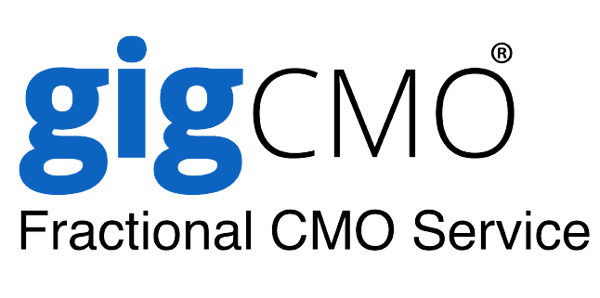Navigating the Business Landscape: Crafting a Solid Foundation for Success and Growth

Many businesses fall short because founders lack the commercial skills to identify potential weaknesses, challenges, and obstacles their ideas must overcome to succeed. It is crucial to understand the underlying reasons behind the business idea and its potential in the market.
Many founders might be passionate about their creations but fail to objectively assess whether there is a genuine demand for their product or service. By emphasising the importance of commercial skills and a thorough analysis of market potential, businesses can increase their chances of creating successful and sustainable businesses built on solid foundations of genuine market demand and customer satisfaction.
What is a Business Foundation
The business foundation refers to the core principles and values underpinning all an organisation's aspects. It represents what the business stands for and the direction it aims to take, both in the present and the future.
This foundation is crucial in charting the path towards achieving the business's objectives. It involves defining the company's internal workings and outlining what success entails, not only for the organisation itself but also for its clients.
A solid and well-defined foundation makes the business's day-to-day operations smoother and more manageable. The guiding principles and established systems form a blueprint for success, facilitating tasks such as outsourcing and scalability. Consequently, this strong foundation fosters growth and empowers the business to reach its goals more effectively.
What are the Current Business Challenges
Creating Stability in the Age of Uncertainty
What to do?
1. Ensuring Financial Stability
Gain a clear understanding of your company's spending patterns. By enhancing spending visibility, you can identify areas of inefficiency, cut unnecessary costs, and optimise resource allocation. This knowledge will enable you to make informed decisions, prioritise essential expenditures, and ensure financial stability during uncertain times. Reviewing your business model in times of uncertainty will help to re-evaluate your spending and optimise your resources and revenue stream.
Book a free consultation with us to review your business model.
2. Investing in Technology and Innovation
3. Upskilling Existing Employees
Adapting to the Future of Work
What to do?
1. Enriching Your Tech Stack
2. Facilitating Interpersonal Relationships
3. Building Trust through Clear Expectations
Adopting ESG as Part of Your Business Model
What to do?
1. Using an ESG Framework
2. Introducing DE&I Initiatives
3. Educating Employees on ESG
Accelerating Digital Transformation
What to do?
1. Data Consolidation and Observability
2. Shifting to Industry Cloud
3. Investing in Cybersecurity AI
Cultivating Robust Agility
What to do?
1. Relying on Agile Goal Setting
2. Utilise a Proven Playbook
Adopt an established and proven playbook that outlines agile methodologies and best practices. Learn from successful examples of agile companies and adapt their strategies to fit your specific business needs. A playbook provides a framework for agile decision-making, ensuring teams can respond swiftly to challenges and seize opportunities without sacrificing efficiency and quality.
At gigCMO, we have developed a business growth playbook based on the industry’s best practices, the vast expertise of our expert teams, and tried-and-true solutions. Continuously evolving, it guarantees your business remains agile and adaptable.
Contact us today to see how we can help you grow your business.
The Components of a Strong Business Foundation
1. A Clear and Defined Business Model
The Target Market
Understanding your target market involves identifying the customers most likely interested in your products or services. Knowing your target audience helps tailor your brand messages and product offerings and better meet customer needs and preferences.
Example: A technology consulting firm that specialises in providing cybersecurity solutions to various industries. Previously, their target market primarily consisted of larger corporations with extensive IT infrastructure. However, with the changing environment of increasing cyber threats and data breaches, the target market has expanded to include smaller businesses that are now realising the importance of robust cybersecurity measures.
Strong Brand Identity
Your brand is more than just a logo or a name: it represents the identity and reputation of your business. Building a solid brand involves establishing a unique and consistent message that resonates with your target audience. It includes your company's values, mission, personality, and the emotions you want to evoke in your customers. A well-crafted brand can foster customer loyalty and differentiate your business from competitors.
Example: IBM is renowned for its expertise in providing business solutions and cutting-edge technologies. Its brand represents reliability and innovation, making it a preferred choice for many businesses.
The Core Value Proposition
The value proposition is a concise statement explaining the unique benefits and values your products or services offer customers. It should address your target audience's pain points or needs and articulate how your offerings solve their problems better than competitors. A strong value proposition can influence purchasing decisions and drive customer interest.
Example: Salesforce's value proposition, "The world's #1 CRM platform”, revolves around helping businesses build strong customer relationships and drive growth through their powerful CRM software.
Products and Services
The core offerings of your business are its products and services. These should be carefully designed and developed to meet the needs and desires of your target audience. A strong business foundation involves creating high-quality, innovative, and relevant products and services. Regularly updating and improving your offerings based on customer feedback and market trends is crucial to staying competitive.
Example: Tesla's products include electric vehicles, energy products like solar panels and batteries. Its focus on sustainability and cutting-edge technology has made it a leader in the electric vehicle market.
The Competitive Environment
Understanding your competitors is vital for success. Conducting competitor intelligence involves analysing and researching your competitors' strengths, weaknesses, strategies, pricing, and market positioning. This knowledge helps you identify opportunities and threats in the market, create a strategy to differentiate yourself from them and gain an edge in the marketplace.
Example: To stay competitive, a manufacturing company should keep abreast of emerging technology trends and incorporate relevant innovations into its solutions. Integrating artificial intelligence, machine learning, or automation features can enhance their offerings and appeal to tech-savvy clients.
The Pricing Strategy
Setting the right pricing for your products and services is crucial for achieving profitability and maintaining a competitive edge. The pricing strategy should consider factors such as production costs, market demand, perceived value, and competitor pricing. A well-thought-out pricing strategy can maximise revenue and attract the right customers.
Example: Adobe's pricing strategy for its Creative Cloud software considers factors such as the number of licenses, additional services, and support catering to the needs and budgets of different B2B clients.
2. A Well-Organised and Efficient Management Structure
No matter the size of your organisation, a well-organised and efficient management structure is another critical component of a strong business foundation. It involves establishing a clear hierarchy, defining roles and responsibilities, and implementing effective communication channels within the organisation. A robust management structure ensures everyone knows their place in the company and that tasks are delegated appropriately to achieve optimal productivity and decision-making.
Key elements of a well-organised and efficient management structure include:
Organisational Structure:
Defined Roles and Responsibilities:
Delegation:
Communication Channels:
Performance Evaluation:
Decision-Making Processes:
3. Developing a Go-To-Market Plan
4. Measure the Success of a Business Strategy
Measuring a business strategy's success requires more than looking at overall organisational growth and sales. To gain a deeper understanding of strategy effectiveness, it is essential to define Key Performance Indicators (KPIs) and set clear Objectives and Key Results (OKRs) that provide specific and measurable insights into various aspects of the business. These OKRs and KPIs help evaluate performance at a granular level and allow for informed decision-making and continuous improvement.
Building a business foundation and strategy with gigCMO provides businesses with expert guidance, industry insights, and the flexibility to adapt to evolving market demands. Their expert guidance empowers businesses to develop a winning strategy, stand out in the competitive landscape, and achieve sustainable growth. With gigCMO's marketing leadership, businesses can succeed in existing markets.
If you want to find out more about how to build and execute an effective go-to-market plan. Please give us a call.
